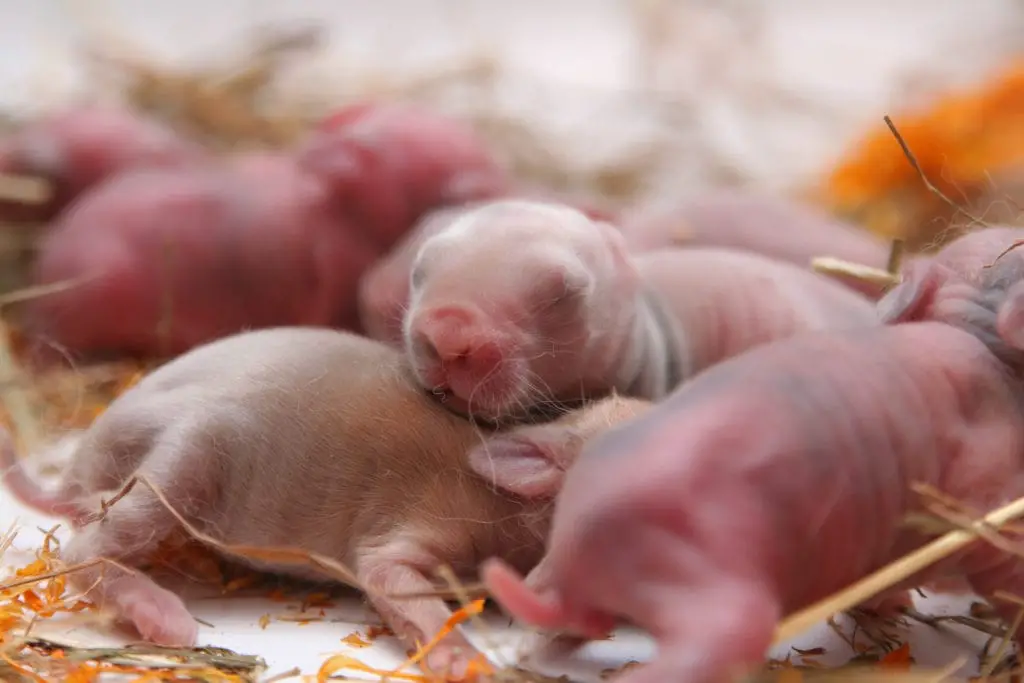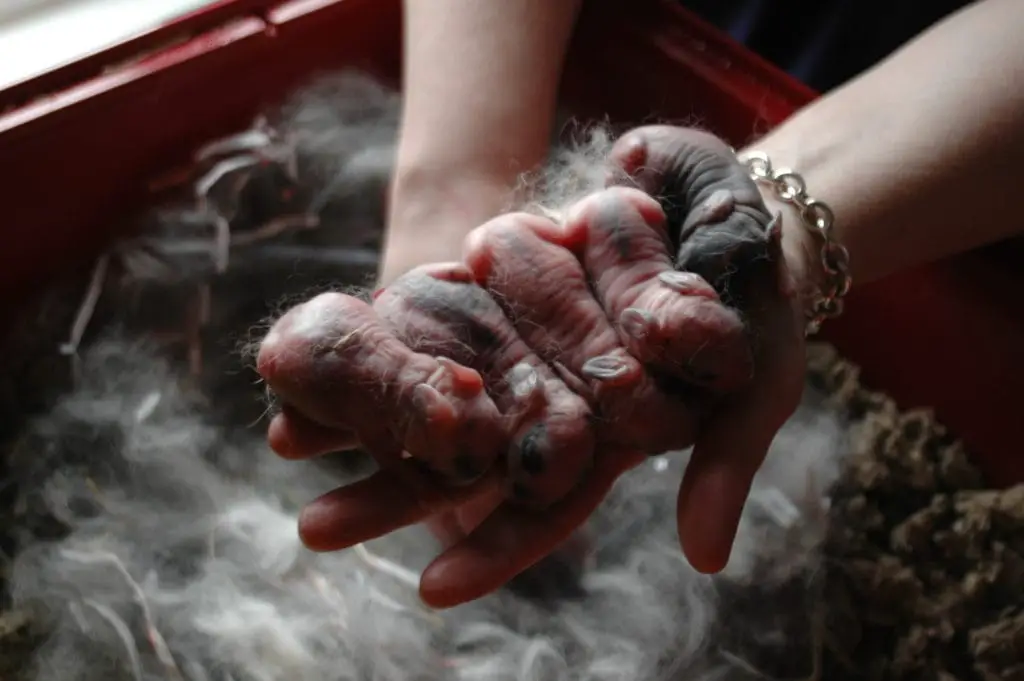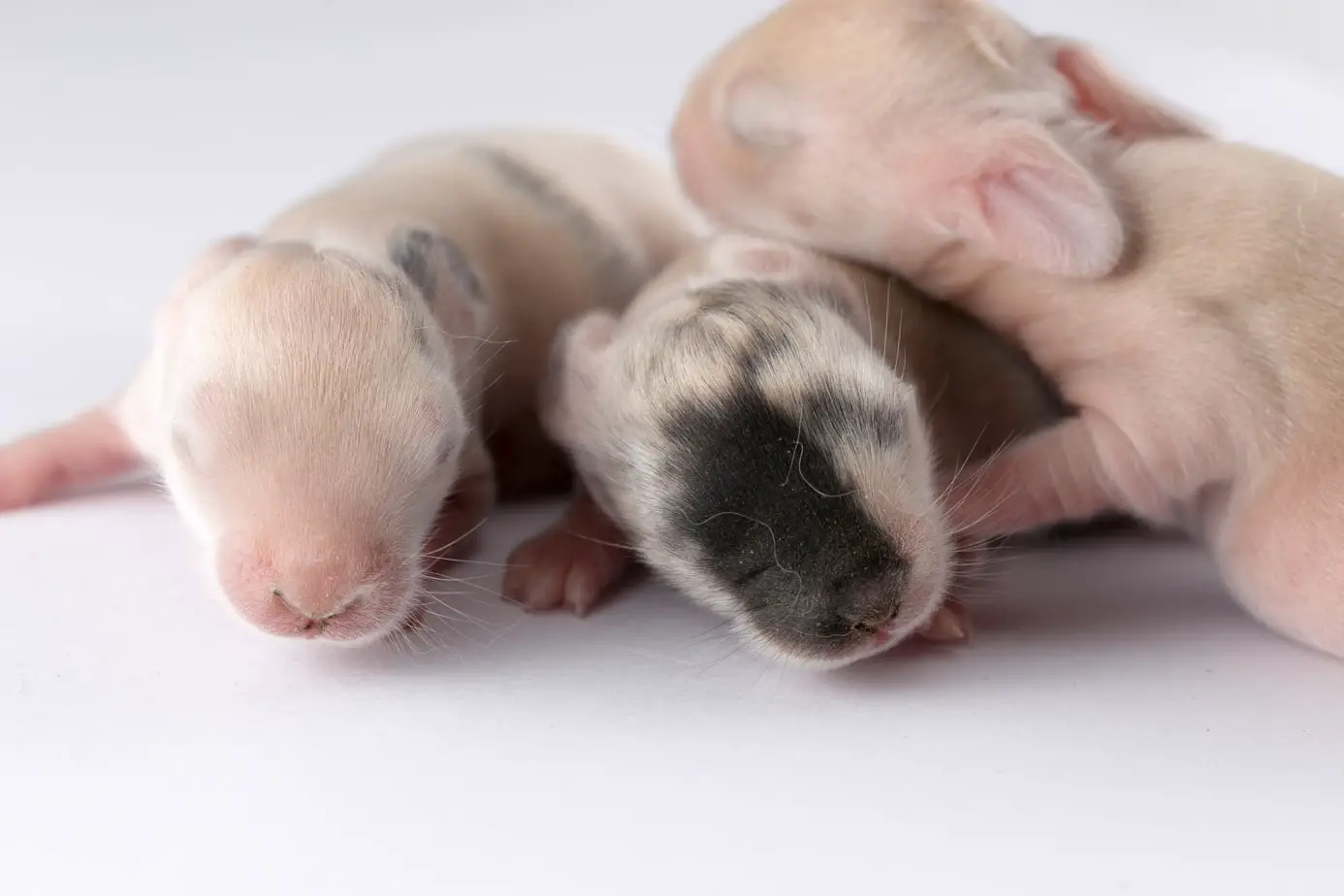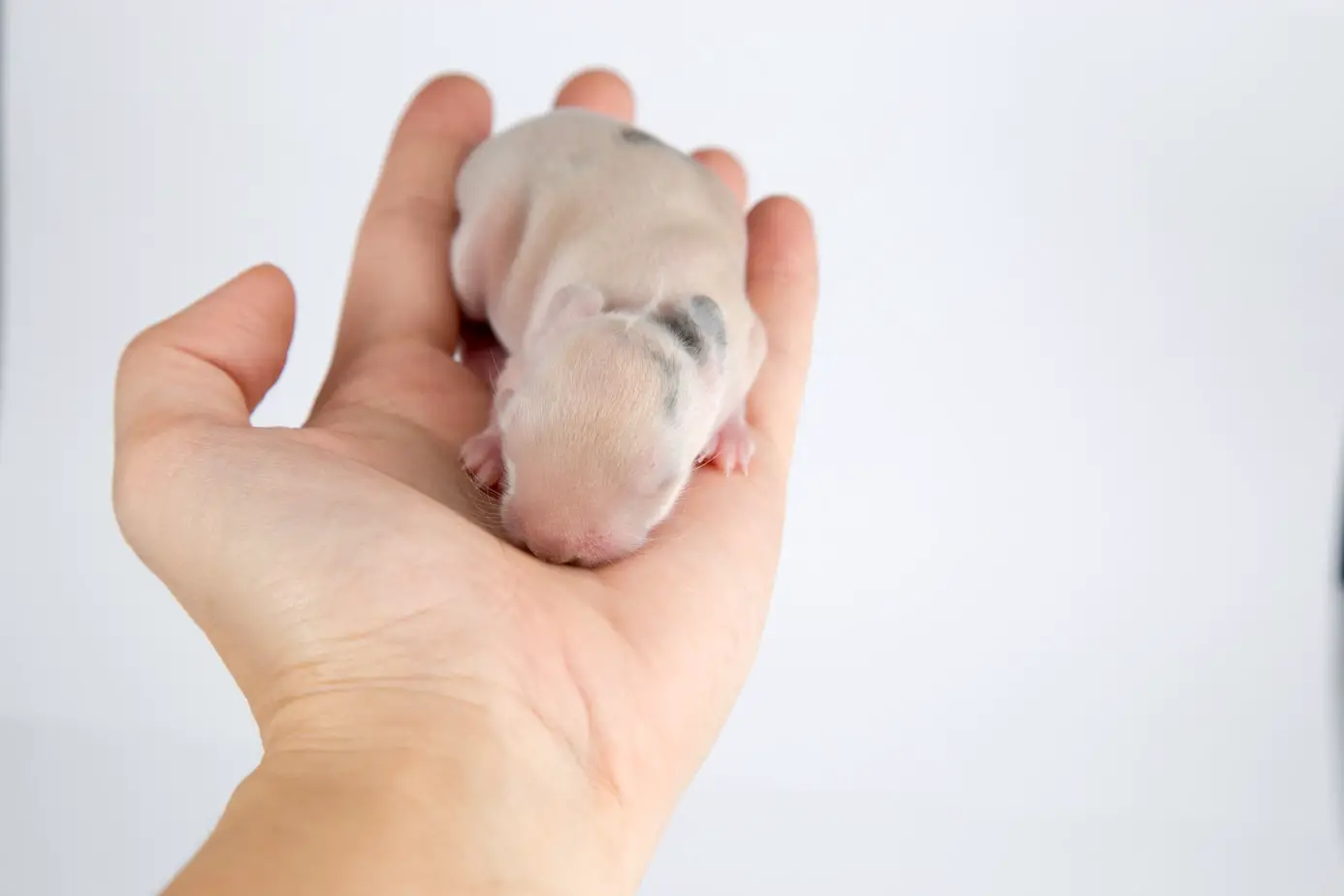
Aren’t baby rabbits just the cutest? You probably just want to cuddle them and care for them as best you can. This begs the question: Do baby rabbits REALLY need a heat lamp?
Baby rabbits do not need a heating lamp. Baby rabbits will keep warm in their mother’s fur, cuddling with their siblings, and burrowing in hay. If you’re still concerned about the warmth of your baby rabbit, a heating pad is a safe alternative.
However, there are some concerns with you warming your baby rabbits yourself. Let’s discuss them before you buy something you may not need.
Why Shouldn’t I Use a Heating Lamp?
To start, the mama rabbit has prepared for her kits (baby rabbits). She has built a nest made of grasses, hay, and loose fur to keep them warm. Mother rabbits do not sit on their kits to keep them warm. The nest they built is well insulated to keep in the warmth that the little babies need.
Wild rabbits are able to keep their kits warm in some of the coldest weather. So, your domestic rabbit should naturally be doing everything she can to keep her kits warm. There is no need for you to intervene unless extreme measures occur. We’ll discuss those in a later section.
A heating lamp is really more trouble than they are actually worth. They can be harmful to your rabbits in a couple of ways:
First, it may cause them to overheat. Rabbits overheat easily and are more suited to cooler weather. Because they are unable to move away from the light of the heating lamp when they get hot, they will probably overheat. When a rabbit overheats, it is most often fatal.
Second, your rabbit may chew the cord. Rabbits are chewers. They chew almost everything they come in contact with. Though some heating lamps advertise a protected cord, it is still possible that your rabbit will chew through it. Your new heating lamp then becomes a dangerous fire hazard.

Many people have shared that heating lamps have, unfortunately, caused many wood cages or hay-filled cages to catch fire, killing their beloved pets. Do not risk the lives of your rabbits and their kits with a heating lamp.
If you want an idea of some things you really do need to get for a new pet rabbit (or in this case, many new baby rabbits), see my in-depth checklist here: Checklist: What You Need to Buy For a New Pet Rabbit.
When Is It Too Cold for Baby Rabbits?
Newborn rabbits should be in temperatures around 100-degree (Fahrenheit) for their first week of life. Mother rabbits are able to accomplish this most easily in a 60–75-degree room. The insulation of the nest that they built with fur and hay will be enough to keep the kits warm in addition to snuggling with their littermates.
After about 10-12 days, the babies are out of danger of freezing. By that point, they will have grown enough fur to keep themselves warm.
Many rabbit breeders on Raising-Rabbits.com, a blog and discussion platform used by other rabbit owners, shared that they have been able to safely birth and raise kits in temperatures as low as 13 degrees Fahrenheit. Some have even had baby rabbits in outside housing in temperatures below 0. However, there are mixed results in temperatures that low. Some mother rabbits were able to build a warm enough nest, while some little kits just did not make it through the night.

What Can I Do to Help Mama Rabbit?
If your rabbit has just given birth, there are a couple of things you can do to help the new mama. Typically, the mama has prepared for her new arrivals, but in some cases, most likely when owners are surprised their rabbit is pregnant, she may need help. She won’t need much, but you may be able to help her make a nest, if she hasn’t already, and check up on her babies.
Help Her Make a Nest
Sometimes if a cage does not permit a mama rabbit to make a nest, the litter will be born on the wires of the cage. This is extremely worrying. The kits will not be warm enough on the wires of the cage, the mama cannot move them, and you will lose some kits. Please take immediate action to keep your litter off of the wires of your rabbit’s cage.
If you’re caught by surprise, as some new owners are, helping her make a nest is a great way to help the new mama.
Use a small box for the nest. Make sure the sides of the box are small enough for mama rabbit to hop out and big enough for her to turn around in. A shoebox is a great option. Place hay, grasses, and any of the mama’s loose fur in the box. Keep the box inside her cage. If the babies have already been born, place them in the nest and cover them with their mama’s fur.
TIP: Keeping the cage clean is one of the hardest parts of raising Rabbits. I’ve come up with some really cool time (and headache) saving tips over the years that I use which make keeping a clean cage very easy! Check out my article all about clever tips for keeping a rabbit’s cage clean here.
There is no need to worry about you handling her kits. Domestic rabbits are accustomed to humans and their scent. She will not kick out a baby for being touched by a human. Though your rabbit might be a little annoyed that you are handling her babies, like any mama would, there is no need to be concerned about the babies’ safety after touching them.
Check up on the Babies
Some breeders recommend checking up on your baby rabbits several times a day to make sure that the mama is keeping them warm and fed. Other breeders do not check in on their kits more than once a day trusting that the mama will take care of them.
If you are worried about your baby rabbits freezing, check on them several times a day to ensure that they have not left the nest and that the mama rabbit is taking care of them.
FEEDING BABY RABBITS: Need some help figuring out how to feed your baby rabbit? Take a look at my feeding guide for specifics on how you can keep your baby rabbits happy and well-fed: Feeding a Baby Rabbit: What, When, and How Much.
Some of your new kits may have wandered from the nest, at which point you will want to return them to the nest. Little kits will easily die from exposure. However, mama rabbits are unable to pick up their babies like cats or dogs. She will need your help to get her baby back to bed.
When returning a baby rabbit to their nest, gently pick them up and place them in the nest with their siblings. Make sure they are snuggled close to their littermates and covered in their mama’s fur.
If you find one of the kits away from the nest and cold, do not panic and assume they are dead. Your baby rabbit may not be dead. When a kit is cold, it is trying to conserve its energy to stay warm. If the baby rabbit is still warm and moving around, there is no need to worry. Simply place them back in the nest with their siblings. In the next section, we will discuss what to do to warm your baby rabbit.

When and How Should I Warm a Baby Rabbit?
If one of your new kits has wandered away from the nest and is cold to the touch, then you should take immediate action to warm them up. However, DO NOT warm them too quickly as that could be fatal. Follow these suggestions to warm up your baby rabbit:
Body Heat
First, try using your own natural heat. Put the little rabbit under your shirt against your skin. It should warm up and it may start to wiggle.
Warm Towel
Next, you can try using a warm towel fresh out of the dryer. Make sure the towel is warm, but not hot. Simply hold your kit in your hands with the towel around them. Once the towel is cooler, rewrap the kit in another warm towel. Do this as many times as needed until the kit begins to move again and is warm without your help.
Water Bath
Another technique that you can try is using warm water. DO NOT submerge the baby rabbit in water.
Warm-up some water in a bowl so that it is warm, but not hot. Next, place the kit in a plastic bag with the top open. Slowly place the kit in the bag in the warm water so that it is surrounded by warmth but not completely covered. Do this as many times as needed until the kit is wiggling, and no longer needs your help to stay warm.
Return to the Nest
Make sure your kit is warm before returning it to the nest. If your baby rabbit is still too cold, its littermates will move away from it so that they can stay warm. Without the cuddling warmth of their siblings, the little kit may get cold again and die even though it’s in the nest.
Heating Pad
If you are worried that your kits will be cold regardless of the nest their mama made, a heating pad is a good option.
Place the heating pad underneath half of the nest or grate of the cage. Placing the pad under half of the cage allows the rabbits to move away from the heat if they get too hot. Put the pad on a low setting. There is no need to heat up your rabbits quickly. Doing so could be fatal.
That said, a heating pad is optional. A mama rabbit should be able to keep her kits warm in the nest she built before giving birth.
More Helpful Info
- Do Baby Rabbits Sleep More? – Want to learn everything you’re going to need to know about the sleeping habits of your new babies? This is what you’re going to need to know, including a few unexpected pieces of info (like, did you know baby rabbits often sleep with their eyes open?!).
- Do Rabbits Need Vaccines? (What You Should Know) – Did you know that in some areas of the world (possibly where you live) you should get your rabbit vaccinated? Find out where this is the case and what you need to do to protect your rabbit. These are things I didn’t know for a long time!
